Optics and optimism: An inventor in Okara
Asad Mehmood’s story is one of ingenuity and improvisation.
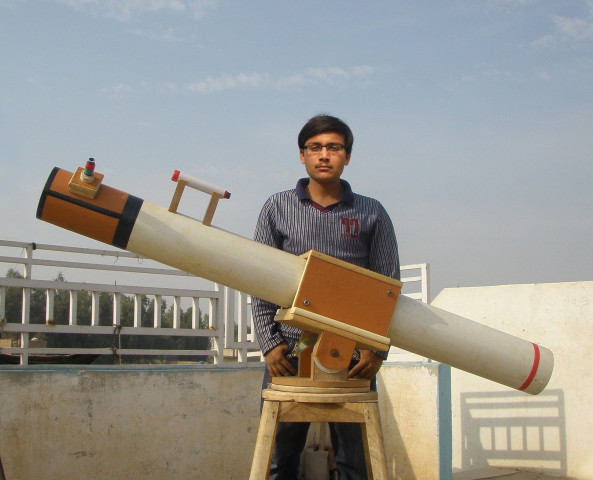
Asad Mehmood’s story is one of ingenuity and improvisation. A pre-engineering student in the District Public School and College Okara, Mehmood has been fascinated with optics ever since he was introduced to the subject in Class 6. “I used to play with convex and concave lenses and perform a lot of experiments, just for fun,” he reminisces. “At that time, I didn’t even know about telescopes, their working or their internal structures.”
While many of us grow out of our childhood fancies, Mehmood’s interest in optics only grew with time, and he started doing some serious reverse engineering. “I not only bought lenses from optics shops but more frequently I got magnifying glasses from bookstores. Then I bought a toy telescope, checked out its internals and made another one identical to it.”
The success of this first invention spurred him on. Not content with toy telescopes, he says, “that was when there rose in me the ambition to build a telescope to view the sky and the moon, the stars and planets.”
But dreaming was one thing, actually building a working telescope quite another. Mehmood had never seen a real telescope in his entire life. There was no astronomy society in Okara that he could turn to; he didn’t even have an internet connection that he could use for research. Still, though he loathed reading, he pored over the books in his school library, reading every scrap of information he could find on astronomy, lenses and optics.
“Fortunately I found a book that dealt with the topic ‘light’, which was exactly what I wanted. I gathered a lot of information about telescopes.”
After a year of failed prototypes, he made a Galilean Telescope, consisting of two convex lenses placed at a specific distance to each other. At that time, he was in Class 8.
Holed up in his room for days on end, he toyed with the magnification and resolution of his telescope, taking great pains to bring small improvements to his design. The same year he also built a low-cost microscope that had the magnifying power of a lab microscope, despite never having seen a lab microscope in his life.
Soon, he found himself fascinated with Newtonian telescopes that consist of a primary parabolic mirror, a plane mirror strip and an eyepiece — all in his head, of course, since there was no question of gaining access to an actual Newtonian telescope in Okara. These reflecting telescopes offer the possibility of high quality images with very little blurring. And Mehmood was already raring to make one — now the challenge was to get a parabolic mirror. Mehmood was ready to do anything to get such a mirror, but parabolic mirrors for Newtonian telescopes were not to be had in Okara.
Finally, he got his lucky break. The Khwarizmi Science Society, a Lahore-based astronomical society, arranged a space observing event at Mehmood’s school. For the first time in his life, Mehmood saw a reflecting telescope, and observed the heavenly bodies. Wonderstruck by that experience and freshly inspired, his resolve to build a similar telescope only grew stronger. This was also the time when he met Ali Khan, a member of the Khwarizmi Science Society. After a barrage of questions from the fledgling astronomer, Khan was impressed by the boy’s zeal but told him that to build his telescope he would have to make his own optics and the task seemed impossible to him. Still, Khan was obliging enough to rake the markets of Lahore for the material required to make the telescope.
In his first year of F.Sc pre engineering part 1, Mehmood started work on the Newtonian Telescope.
First, he had to grind a thick glass and convert it into a concave lens. This was tricky and laborious business but he kept at it day and night, grinding the glass with his own hands, YouTubing videos (he now had an internet connection), making mistakes, and starting over. The failures he faced during this time would have discouraged anyone, but at no point did Mehmood even consider the possibility of failure. His family encouraged him, particularly his father, who would try to provide Mehmood any materials he needed for his experiments. Six months later, he was done with the first phase of his telescope.
Now the next step was to polish the mirror. The concave lens that he had ground and refined had to be converted into a smooth and polished surface. This was a delicate task but finally, a year and 9 months after he first embarked on the project, the glass had gained a fine parabolic concave curve.
He then fashioned the body of his Newtonian telescope with a PVC pipe: installing the mirror, adjusting the plane mirror strip and installing an eyepiece. He designed a stand on which to mount his creation, one which would not only bear the weight of the telescope but would also allow for up-down and left-right movement. Then he lovingly painted it. Asad Mehmood, FSC student from Okara, had just made the 6th most powerful telescope in the country!
Mehmood’s telescope is capable of viewing clear, magnified images of the moon’s craters, Jupiter, (along with its four moons), Saturn and Venus. This telescope magnifies images to 300 times the size visible to the naked eye. Incidentally, Mehmood is the first to build a telescope of this kind in Pakistan.
So is he now basking in his glory? No, the ‘Junior Scientist’ — as he has affectionately been nicknamed by his teachers and classmates — already has his eyes set on his next project: building Pakistan’s largest telescope and he is quite confident that he can do it. And so are we!
Published in The Express Tribune, Sunday Magazine, August 28th, 2011.

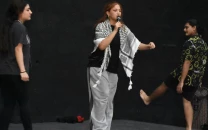
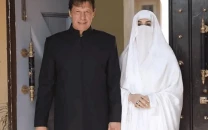

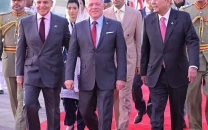
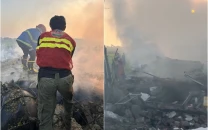
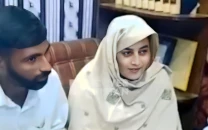
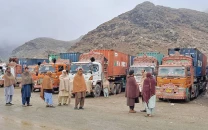

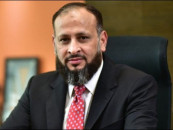
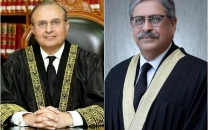
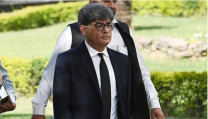


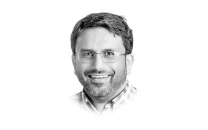



COMMENTS
Comments are moderated and generally will be posted if they are on-topic and not abusive.
For more information, please see our Comments FAQ